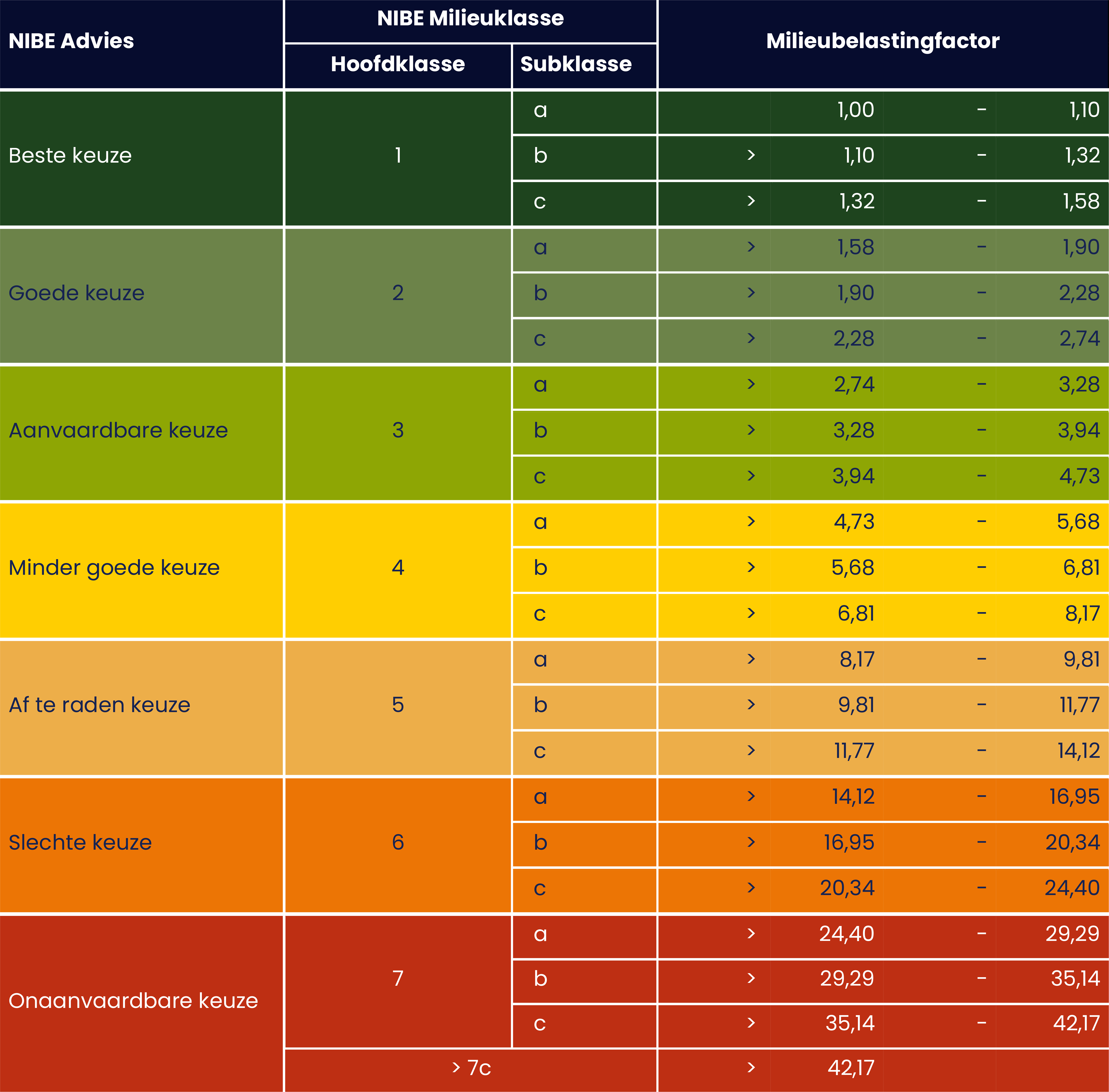DUBOkeur®, an environmentally sensible choice
Sustainable construction is about more than just low energy consumption. It is also about using products and raw materials with a low environmental impact. Sustainable materials with respect for the environment.
But how do you know which building product is a sustainable choice and how do you demonstrate this?
Only by comparing the sustainability performance of products can clients make an informed choice. With DUBOkeur® you show that your product is a sustainable choice. Independent, transparent and unique!
DUBOkeur® to demonstrate how your product performs against the benchmark
Based on an LCA study, NIBE assesses the environmental performance of your product and compares it to the environmental performance of generic products in the NIBE Environmental Classifications. Only the most environmentally friendly products within a given application qualify for DUBOkeur®.
DUBOkeur® assessment
The NIBE Environmental Classifications contains about 1,000 generic products for which NIBE has calculated and classified the environmental impact. The NIBE Environmental Classifications has seven environmental classes. The most sustainable product, with the lowest environmental impact (read shadow costs*), is given Environmental Class 1, subclass a. This best scoring, most environmentally friendly product is the Environmental Reference and the benchmark for DUBOkeur®.
For each of the other construction products within the same application, the Environmental Reference is used to determine the Environmental Class.
| An example Shadow costs for 1a - best choice - amount to Shadwo costs for alternative Y amount to |
€ 0.50 € 2.00 |
| Because the shadow costs for alternative Y are four times as high as for 1a (the benchmark), the so-called NIBE Environmental Impact Factor for alternative Y is 4. The table below shows that alternative Y, with an Environmental Impact Factor of 4, falls in Environmental Class 3c. |
*Shadow costs (or prevention costs) are costs you would have to incur to compensate for the negative environmental impacts of producing a product.
 Table 1 - NIBE Environmetal Classes
Table 1 - NIBE Environmetal Classes
Only products with Environmental Class 1 or 2 receive the DUBOkeur®. For products with Environmental Class 3c the additional condition applies that the product must score at least one Environmental Class better than the lowest scoring product in the application.
To ensure that products with DUBOkeur® comply with current insights, applicable LCA methods and most recent database sources, DUBOkeur® is valid for two years. After that, the DUBOkeur® product should be re-evaluated and compared with the most up-to-date benchmark.
Products with DUBOkeur® are listed with the product group on the NIBE Environmental Classification website. Immediately visible for designers who are looking for sustainable alternatives. In addition, all products with DUBOkeur® are included in an easily accessible overview.
Would you like to know if your product qualifies for DUBOkeur®?
We will be happy to help dubokeur@nibe-sustainability-experts.com.
The NIBE Environmental Classifications can be consulted free of charge at www.nibe.info.